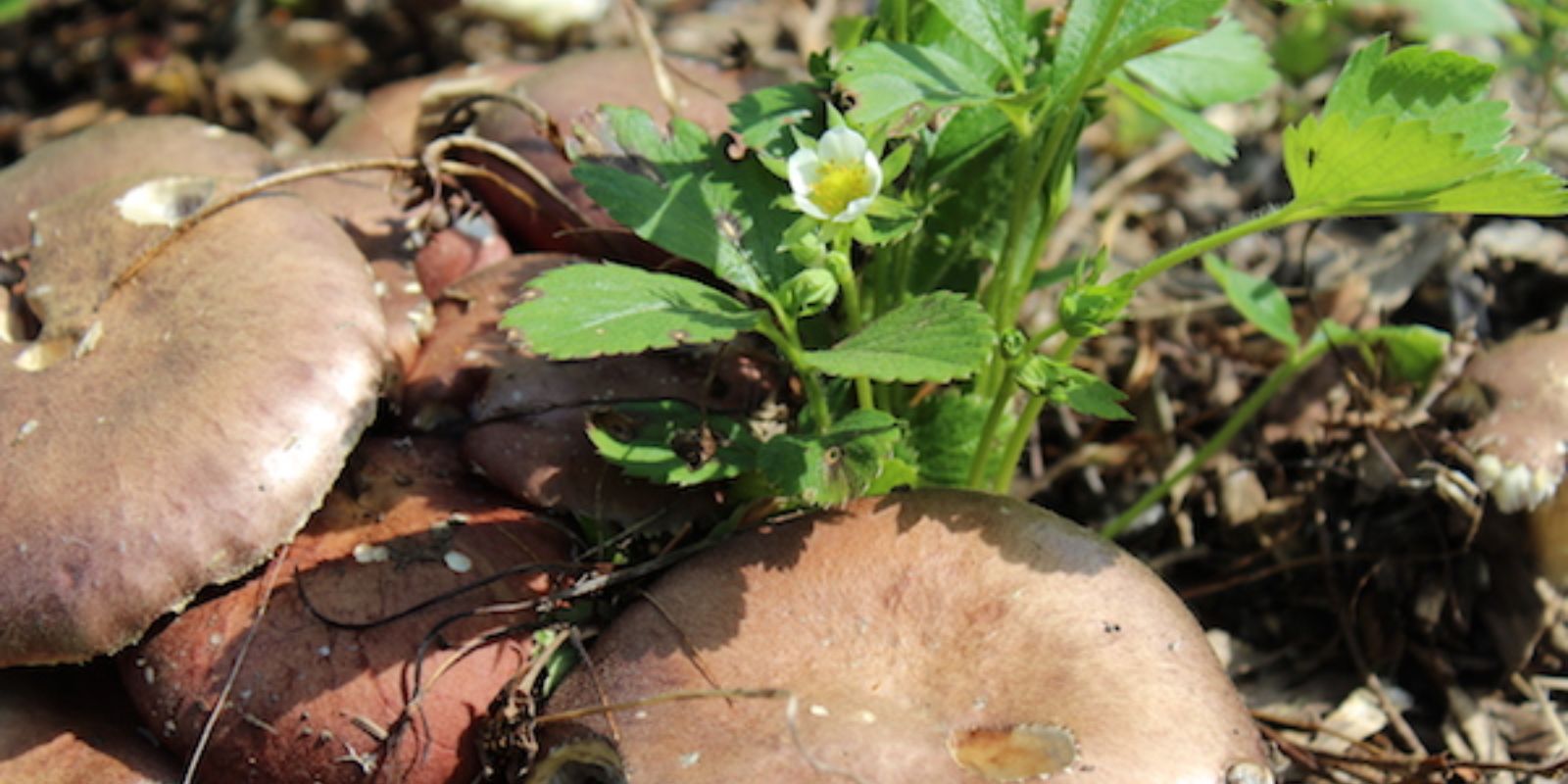Introduction
Companion planting is a gardening technique that pairs plants together to enhance their growth, health, and productivity. While traditional companions often include plants like tomatoes and basil or beans and corn, a less common but equally effective combination is strawberries and mushrooms. This pairing not only maximizes space and resources but also creates a harmonious garden environment where both plants thrive. In this comprehensive guide, we’ll explore the benefits of companion planting strawberries with mushrooms, and provide you with step-by-step instructions on how to implement this innovative approach in your garden.
The Benefits of Companion Planting Strawberries with Mushrooms
- Enhanced Soil Health: Strawberries and mushrooms have complementary needs when it comes to soil health. Mushrooms break down organic matter, creating a nutrient-rich environment that benefits strawberry plants. This decomposition process adds valuable nutrients to the soil, improving its structure and fertility.
- Improved Moisture Retention: Mushrooms require moist conditions to thrive, and their presence can help retain soil moisture. This can be particularly beneficial for strawberries, which also need consistent moisture to produce healthy fruit.
- Weed Suppression: The dense growth of mushroom beds can help suppress weeds around strawberry plants. This reduces competition for nutrients and light, allowing strawberries to grow more vigorously.
- Pest Control: Certain mushroom species can attract beneficial insects and fungi that help control pests. This natural pest management can reduce the need for chemical interventions and promote a healthier garden ecosystem.
- Space Optimization: By growing mushrooms in the same space as strawberries, you make the most of your garden area. This is especially valuable in smaller gardens or raised beds where space is limited.
Step-by-Step Guide to Companion Planting Strawberries with Mushrooms
1. Choose the Right Strawberry Variety
Start by selecting a strawberry variety that suits your climate and soil conditions. Both June-bearing and everbearing varieties can be effective, but ensure they are appropriate for your growing zone. June-bearing strawberries produce a large crop once a year, while everbearing types produce fruit throughout the growing season.
2. Prepare the Soil
Strawberries thrive in well-drained, fertile soil. Test your soil’s pH and amend it as needed to achieve a pH level between 5.5 and 6.8. Add organic matter such as compost or aged manure to improve soil fertility and structure. Good soil preparation will support both strawberry and mushroom growth.
3. Plant Strawberries
Space strawberry plants about 12-18 inches apart in rows. This spacing allows for proper air circulation and room for the plants to spread. If you’re using a raised bed, space plants similarly to ensure they have enough room to grow and produce fruit.
4. Inoculate Mushrooms
Choose a mushroom species that is compatible with strawberries, such as oyster or shiitake mushrooms. These mushrooms are relatively easy to grow and can be inoculated using spores or spawn. Prepare a substrate for the mushrooms, which can be straw, wood chips, or sawdust. Sterilize the substrate if necessary to eliminate competing microorganisms.
5. Position Mushroom Beds
Place mushroom beds between or around strawberry plants. Ensure the mushroom beds are shaded, as mushrooms prefer cooler, low-light conditions. Positioning them strategically around strawberries can provide both plants with their preferred growing conditions.
6. Maintain Moisture
Both strawberries and mushrooms need consistent moisture. Keep mushroom beds moist but not waterlogged, and ensure strawberry plants receive regular watering. Mulch around strawberry plants to help retain moisture and reduce weed growth.
7. Mulch and Cover
Use mulch to cover the soil around strawberries and mushrooms. For strawberries, mulch helps conserve moisture, suppress weeds, and maintain a consistent soil temperature. For mushrooms, cover the mushroom beds with a layer of straw or mulch to keep humidity levels high and promote healthy growth.
8. Monitor and Maintain
Regularly check the health of both your strawberry plants and mushroom beds. Look for signs of pests, diseases, or nutrient deficiencies. Address any issues promptly to maintain a healthy garden ecosystem. Prune and harvest strawberries as needed, and manage mushroom growth to ensure a steady supply.
9. Harvest and Enjoy
Harvest strawberries when they are fully ripe and brightly colored. Mushrooms should be harvested when they reach their mature size and before they begin to spore. Enjoy the fruits of your labor, knowing that your companion planting efforts have resulted in a bountiful and productive garden.
Conclusion
Companion planting strawberries with mushrooms is an innovative approach that offers numerous benefits for your garden. By enhancing soil health, improving moisture retention, suppressing weeds, and optimizing space, this pairing creates a thriving garden ecosystem. Follow the steps outlined in this guide to implement this strategy and enjoy the rewards of a lush, productive garden.
Motivation
Ready to transform your garden with this unique companion planting duo? Dive into the world of strawberries and mushrooms and share your success with fellow gardeners using #StrawberriesAndMushrooms #CompanionPlanting #GardenInnovations. 🌱🍓🍄

